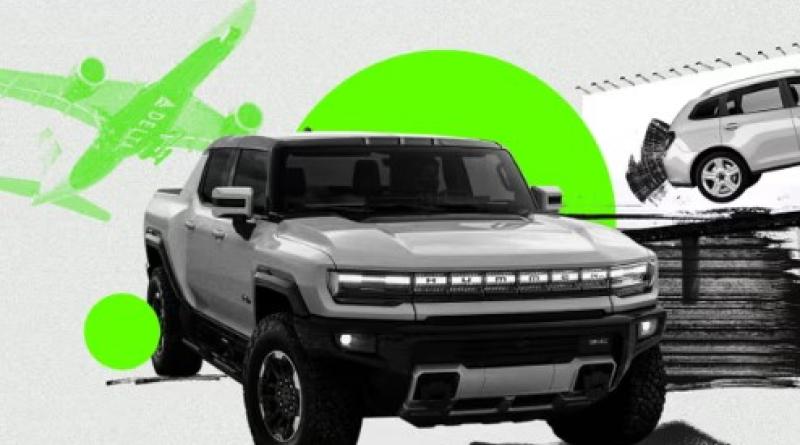Ad industry grapples with role selling consumption in climate crisis

Does being an effective agency mean helping sell more products or can it mean helping mitigate climate emergency?
When Bartle Bogle Hegarty won one of the advertising industry’s most coveted prizes – the Effectiveness award – for their amazing car-selling prowess, two executives from another company worked out that the resultant carbon emissions of the extra 132,700 Audis that BBH had managed to shift came to about 5.2m tonnes, roughly equivalent to the annual CO2 emissions of Uganda.
The work has been a lightning rod in an industry that is deeply divided over its role in the climate crisis. There is increasing agreement that although individual behaviour should not be the primary focus for change, some individuals’ behaviour – namely that of the world’s wealthiest people – has a much bigger impact not only on global emissions but also on broader economic and political trends. But how should the advertising and PR industries grapple with the overconsumption of the top 10%?
After all, advertising drives consumption – a fact of which the industry is intensely proud. The UK’s Advertising Association likes to brag that every pound spent on advertising returns six pounds to GDP. The US Advertising Coalition finds that every dollar of ad spend drives about $21 in sales.
“The fundamental question is: is the advertising industry going to help or hinder society in its attempt to reach net zero?” said Jonathan Wise, a co-founder of the nonprofit group Purpose Disruptors, which aims to shift the industry away from high-consumption advertising. “At the moment, on balance of evidence, the decision is to hinder. It’s advertising driving consumption upward.”
The industry disputes this. “Our research shows the goal of most advertising is to help brands, products, and services grow sales at the expense of their competitors,” a spokesperson for the Advertising Association said. “This leads to substitution rather than increased consumption overall.”
Unsurprisingly, the sector knows the importance of sending out encouraging messages about the work they are doing. In 2020 the Advertising Association, along with the Institute of Practitioners in Advertising and the Incorporated Society of British Advertisers created Ad Net Zero, and billed it as the global advertising industry’s response to climate change. The action plan, however, focuses primarily on reducing the emissions of agencies’ own operations as opposed to those associated with the products they sell.
There has been a push within the industry to get advertising to shift towards more sustainable products, for example electric vehicles rather than combustion engine cars, or plant-based foods as opposed to beef. This is seen by the industry as one of the critical ways they can have an impact, and such shifts do deliver reductions in emissions. But Wise worries that simply replacing emissions-intensive consumption with a lower-emissions version isn’t enough to decarbonise the economy.
And while a handful of agencies are looking to sell greener options, the actions of the industry as a whole seem to show a resistance to considering such things as their responsibility. The transportation sector, identified as probably the most significant area of consumption for the top 10% by Julia Steinberger, a professor of ecological economics at the University of Lausanne and the author of a 2020 paper on the topic, is a good example. “The categories of consumption that the wealthiest people overconsume or overspend on and that constitute the big difference in their emissions is really flying longer distances, and driving bigger cars longer distances, so transportation is really the big one,” Steinberger said.
Data on ad spend from the data service Media Radar shows that advertisers in those categories drive that precise overconsumption. US automakers are spending at least twice as much to push their largest models of electric vehicles – SUVs, trucks and sedans that require extra large batteries, or in some cases two batteries – versus more compact options that would reduce the need for not only rare earth minerals but also steel, iron and plastic.
In some cases the chasm between what is spent to push larger versus smaller EVs is even larger. From October 2022 to October 2023, General Motors spent more than $96m (£76m) to advertise its electric Hummer and Blazer models (not including agency creative fees). It spent just over $5m to advertise its compact Bolt option over the same time period. Ford spent $61.2m (£48.7m) to advertise its electric F150 , and around $9m to advertise its mid-size electric Mustang. Among the top automotive advertisers, only BMW and Hyundai are spending as much or more to market their more efficient EVs.
Similar trends are evident in the air travel industry. More than half of Delta Air Lines’ approximately $151m ad spend from October 2022 to October 2023, for example, was spent advertising long-haul flights, encouraging travellers to rack up air miles to use for more travel, and pushing upgrades to premium classes, although the airline also spent tens of millions of dollars to advertise its commitment to “sustainable aviation fuels”.
Qatar Airways, meanwhile, directed more than 85% of its advertising spend during the same year into marketing business class and long-haul flights exclusively.
Short-haul flights are not necessarily environmentally preferable, particularly flights that could be replaced by a rail trip; they emit more carbon dioxide per kilometre than long-haul flights, making them more carbon intensive. However, long-haul flights emit more in total; they account for only 6% of total flights, yet are responsible for 51% of air travel emissions.
Green consumerism may be a necessary step on the path to sustainable consumption, argues Solitaire Townsend, a co-founder of the sustainability agency Futerra. She points out, pragmatically, that the current situation is not surprising: “The highest carbon behaviours and products get the most advertising because they’ve got the biggest margins.” In short, big cars make big money for their makers, and for their advertisers.
Another part of the problem, according to Townsend, is that ostentation is desirable. “All throughout human history and all throughout the animal kingdom, wasteful overconsumption is used as a signal of desirability of a mate,” she said, citing a peacock’s feathers as a good example. “And so one of the things which marketers who know this very well can do is to kind of go: how can we make sustainable products that look ostentatious?”
But Wise is not sure that green consumerism is an answer. “At some point, we have to have a conversation about the relationship between the client, the agency helping them sell their product or maintain their share price, and our responsibility to the British people.”
The Advertising Association says its industry has a role to play in enabling and encouraging the sort of behaviour change necessary to create a decarbonised society. “Advertising makes a valuable contribution to the social and cultural fabric, not just the economy, and has a crucial role in public messaging.”
In the end, the decision may be taken elsewhere, because the amount of stuff people need to be satisfied in their lives is going down, according to Steinberger. “The empirical evidence is very, very strong and it shows that human development indicators, life satisfaction indicators, all of these things do saturate at a moderate level of income, at a moderate level of energy use, and not only that, but those income and energy levels are actually dropping over time.”
Composite: Getty Images/Good Design Awards / REX





